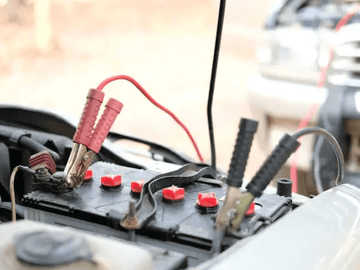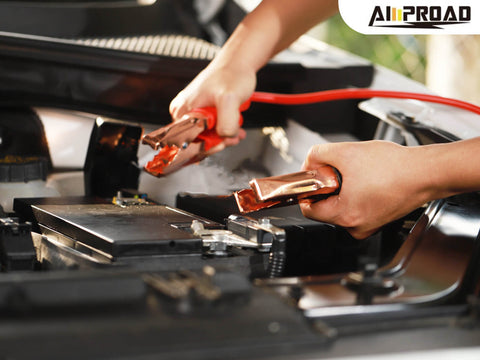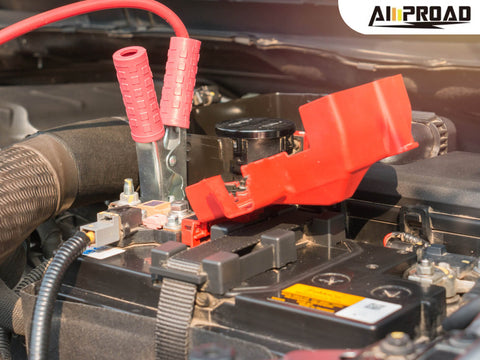
Portable jump starters are compact devices designed to revive a vehicle's dead battery quickly and conveniently. They work by delivering a surge of power to the battery, jump-starting the engine and allowing the vehicle to start. While these devices offer a handy solution for emergency situations, it's essential to consider potential risks. Incorrect usage or connection may pose risks, including damage to the vehicle's electrical system or even personal injury. Understanding how portable jump starters function and the precautions to take can mitigate these risks. In this article, we'll delve into the workings of portable jump starters, explore their potential risks, and provide guidance on safe usage to ensure your vehicle gets back on the road without complications.
Understanding Portable Jump Starters
How do portable jump starters deliver power to a vehicle's battery?
Portable jump starters work by delivering a surge of electrical power directly to the vehicle's battery. They typically consist of a battery pack, cables, and clamps. The battery pack stores energy, which is then transferred to the vehicle's battery through the cables and clamps. When the portable battery booster is connected correctly, the energy flow jump-starts the vehicle's engine, allowing it to start.
What types of portable jump starters are available on the market?
There are various types of portable jump starters available on the market, ranging from compact handheld units to larger, more powerful models. Some jump starters are equipped with built-in air compressors or emergency lights for added versatility. Additionally, there are jump starters designed specifically for jump-starting cars, trucks, motorcycles, boats, and even recreational vehicles (RVs).
Do portable jump starters vary in terms of power output and compatibility with different vehicles?
Yes, portable jump starters vary in terms of power output and compatibility with different vehicles. Power output is measured in peak amps or cranking amps, indicating the jump starter's ability to deliver a surge of power to start a vehicle's engine. Higher amp ratings are suitable for larger vehicles with larger engines, while lower ratings are suitable for smaller vehicles. It's essential to choose a battery booster pack with a power output appropriate for your vehicle's engine size.
Compatibility also varies depending on the type of vehicle and battery. Some jump starters are designed for use with specific battery types, such as lead-acid or lithium-ion batteries, while others are compatible with a wide range of battery types. It's crucial to ensure compatibility with your vehicle's battery type before purchasing a portable jump starter to avoid potential damage or ineffective jump-starting.
Potential Risks and Damage

Can using a portable jump starter incorrectly damage a vehicle's electrical system?
Yes, using a portable jump starter incorrectly can potentially damage a vehicle's electrical system. Incorrect connection or misuse of the booster batterie may result in electrical surges or short circuits, which can harm sensitive electronic components in the vehicle's electrical system, such as the engine control unit (ECU), alternator, or fuses.
Are there specific precautions to take when using a portable jump starter to avoid damage?
Absolutely, there are several precautions to take when using a portable jump starter to prevent damage. Firstly, carefully read and follow the manufacturer's instructions provided with the jump starter. Ensure that the jump starter is compatible with your vehicle's battery type and that the cables are connected correctly—positive to positive and negative to negative. Additionally, never allow the clamps to touch each other or any metal surfaces on the vehicle, as this can cause a short circuit.
How can improper connection or misuse of a portable jump starter lead to damage?
Improper connection or misuse of a portable jump starter can lead to damage in various ways. For instance, connecting the jump starter clamps incorrectly or reversing the polarity can result in electrical damage to the vehicle's electrical system components, including the battery, alternator, or even the jump starter itself. Similarly, using a jump starter with insufficient power output for your vehicle's engine size may strain the starter or fail to provide enough power to start the engine, potentially causing damage to both the jump starter and the vehicle. It's essential to take proper precautions and follow the correct procedures when using a portable jump starter to avoid these risks and ensure a safe and successful jump-starting process.
Factors Influencing Damage
Are there certain conditions or situations where using a portable jump starter may pose a higher risk of causing damage?
Yes, certain conditions or situations can increase the risk of damage when using a portable jump starter. For example, attempting to jump-start a vehicle with a severely depleted or damaged battery may strain the jump starter and increase the likelihood of damage. Similarly, using a jump starter with insufficient power output for the vehicle's engine size or attempting to jump-start a vehicle with incompatible battery types can also pose a higher risk of damage.
How does the quality and condition of the portable jump starter itself affect the risk of damage?
The quality and condition of the portable jump starter play a significant role in its effectiveness and safety. A high-quality jump starter manufactured by a reputable brand like AMPROAD and maintained in good condition is less likely to malfunction or cause damage compared to a cheap or poorly maintained unit. Regular inspection, maintenance, and replacement of worn-out components such as cables, clamps, and batteries are essential to ensure the safe and reliable operation of the jump starter.
Can environmental factors such as temperature or moisture impact the safety and effectiveness of using a portable jump starter?
Yes, environmental factors such as temperature and moisture can impact the safety and effectiveness of using a portable jump starter. Extreme temperatures, whether hot or cold, can affect the performance and lifespan of the jump starter's battery and electronics. Moisture or water ingress can cause corrosion or short circuits, leading to malfunctions or damage. It's important to store and use the jump starter in a dry, temperature-controlled environment and avoid exposing it to extreme conditions whenever possible.
Best Practices and Safety Tips

Before we delve into the best practices and safety tips for using portable jump starters, let's explore how to boost a car safely and effectively.
How to boost a car using a portable jump starter?
Boosting a car with a portable battery booster requires following a few essential steps. Firstly, ensure both vehicles are turned off and parked in a safe location. Next, locate the battery terminals and identify the positive (+) and negative (-) terminals. Then, connect the red clamp of the jump starter to the positive terminal of the dead battery and the black clamp to a clean, unpainted metal surface on the vehicle's frame. Once connected, turn on the jump starter and attempt to start the vehicle. Once started, carefully remove the clamps in reverse order, starting with the black clamp and then the red clamp. Properly store the jump starter after use and avoid touching the clamps together or allowing them to touch metal surfaces during the process.
Are there guidelines for selecting the appropriate portable jump starter for a specific vehicle?
Yes, selecting the right portable jump starter for your vehicle is crucial for safe and effective jump start. Consider factors such as the engine size of your vehicle, the battery type (e.g., lead-acid or lithium-ion), and the peak amp rating of the jump starter. Choose a jump starter with sufficient power output to start your vehicle's engine and ensure compatibility with your battery type. Additionally, opt for a reputable brand with a history of reliability and positive reviews from other users.
How can regular maintenance and inspection of portable jump starters help prevent damage?
Regular maintenance and inspection of portable jump starters are essential for preventing damage and ensuring reliable performance when needed. Periodically check the condition of the jump starter's cables, clamps, and battery for signs of wear, corrosion, or damage. Replace any worn-out components promptly to prevent malfunctions during use. Additionally, keep the jump starter clean and dry, and store it in a cool, dry place when not in use. Performing these routine maintenance tasks will help prolong the lifespan of your jump starter and ensure it's ready to use when you need to boost a car.
Common Misconceptions
Are there any myths or misconceptions surrounding the use of portable jump starters and their potential to cause damage?
Yes, there are several myths and misconceptions surrounding the use of portable jump starters. One common misconception is that jump starters are always safe to use and won't cause any damage to the vehicle's electrical system. However, incorrect usage or connection can indeed lead to damage, highlighting the importance of following proper procedures and precautions.
What are some commonly held beliefs about portable jump starters that may not be accurate?
One commonly held belief is that any jump starter will work with any vehicle. In reality, jump starters vary in power output and compatibility, and using the wrong jump starter for your vehicle can lead to ineffective jump-starting or potential damage. Another misconception is that leaving a jump starter connected for an extended period will charge the vehicle's battery fully. While a jump starter can provide enough power to start the engine, it is not designed for long-term charging and may not fully recharge a depleted battery. Additionally, some people believe that jump-starting a vehicle is always a straightforward process. However, improper connection or misuse of the jump starter can lead to safety hazards or damage, underscoring the importance of understanding proper jump-starting procedures. By debunking these myths and misconceptions, users can better understand the capabilities and limitations of portable jump starters and use them safely and effectively when needed.


